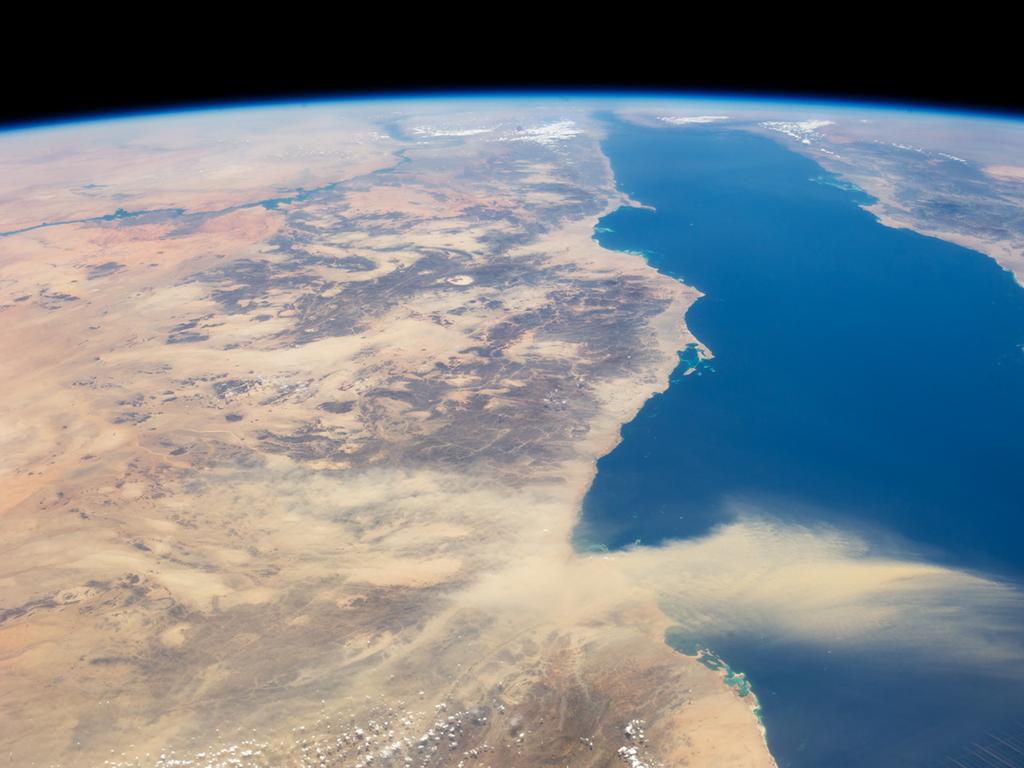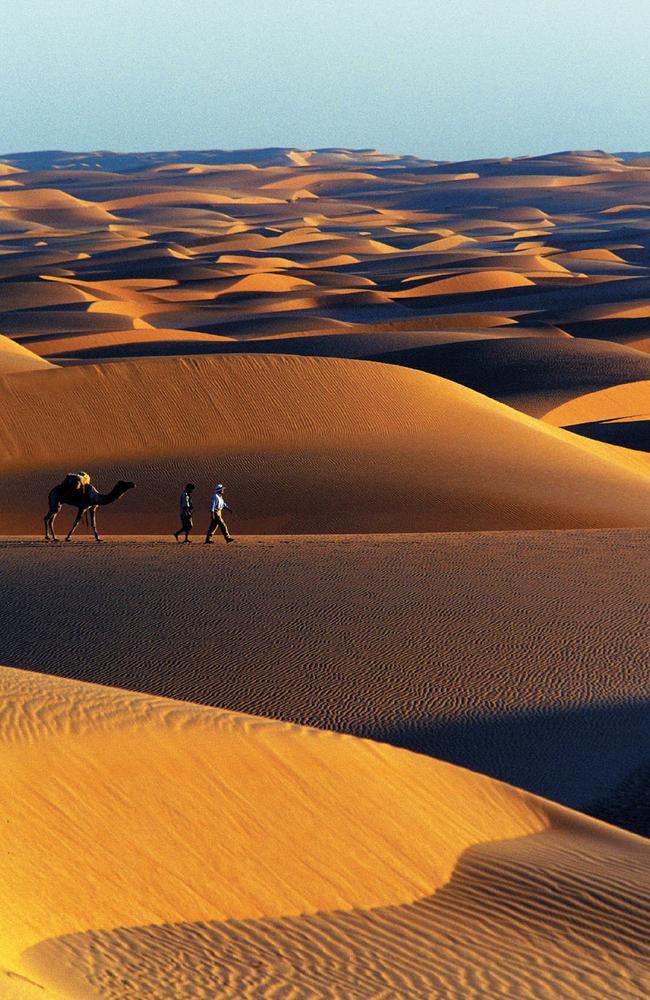Shedding new light on the lost civilisations of the Sahara
Mysterious stone structures abandoned in the Sahara desert could contain clues to an event that rocks the Earth every 20,000 years.
It’s one of the most desolated places on Earth. Dry. Wind-swept. Nothing but sand and stone from horizon to horizon. But a few scattered stone structures indicate it wasn’t always this way. A closer inspection reveals ancient rock art of lush hunting grounds, and the bones of animals from a near-forgotten past.
Two new publications attempt to tackle this mystery head-on.
One, by the Massachusetts Institute of Technology (MIT), has extracted sample cores off the coast of west Africa. It has analysed dust particles dating back some 240,000 years to build up a picture of how the sun-soaked region changed from fertile savanna to dust dunes.
EXPLORE MORE: What if humans were not Earth’s first civilisation?
Another, The Archaeology of Western Sahara: A Synthesis of Fieldwork, laments the inability of researchers to follow up on tantalising initial studies of strange stone shapes and structures lost in the desert.
Together, the two could paint a picture of how an ancient human society contended with a world rapidly changing around them.

WRIT IN STONE
Lonely standing stones. Mysterious piles of rock. Strange sweeping shapes.
Some sit alone. Others are arranged in groups. They can be found scattered across much of the Western Sahara.
What they were for is unknown.
In that way, they are similar to the strange stone structures recently identified in Saudi Arabia.
Studying them has proven difficult.
There is no love lost between Morocco and the Sahrawi Arab Democratic Republic which now claim the ancient landscape. Before 1991, they were at war.
But, for a brief time between 2002 and 2009, archaeologists were allowed to survey the rock formations. Since then, they’ve largely had to rely on satellite photography.
ATLANTIS: How the Nazis used the myth to justify genocide
“The archaeological map of Western Sahara remains literally and figuratively almost blank as far as the wider international archaeological research community is concerned, particularly away from the Atlantic coast,” write senior lecturer at the University of East Anglia Joanne Clarke and independent researcher and Nick Brooks.
Almost no excavations have been conducted on the sites. What few easily accessible grave sites that have been studied have produced artefacts dating back some 1500 years.
But researchers believe signs of inhabitation can be found dating back some 11,500 years, from the point the glaciers of the last ice age retreated from the landscape.
“Generally speaking, the living have left very little trace of their existence while funerary monuments endure, stamping the landscape with a cultural timelessness that marks certain regions of the desert as ‘special’,” the authors write.

BURNT INTO THE GROUND
It’s hard to believe much of the Sahara was lush with life. But the MIT study published in the journal Science Advances reveals a pattern of life and death that makes its dramatic swing roughly every 20,000 years.
Every dust storm added a new layer to this sediment. It creates a ‘tree ring’ effect, allowing researchers to date each deposit
They attribute this regular change to the clockwork motion of the Earth’s rotation around the Sun.
The axis (or tilt) of the Earth relative to the Sun ‘wobbles’ slowly.
This affects different regions of the planet in different ways.
AD536: Why this was the worst year to be alive - ever.
But, for North Africa, when the Earth tilts to give the area more summer sunlight — it results in an increase of monsoon activity. These regular, heavy rains make the Sahara green.
When Earth swings North Africa a little further away from direct sunlight — the monsoons retreat, leaving behind fields of dust.
“Our results suggest the story of North African climate is dominantly this 20,000-year beat, going back and forth between a green and dry Sahara,” says David McGee, an associate professor in MIT’s Department of Earth, Atmospheric and Planetary Sciences.
“We’ve assumed that ice ages have been the key thing in making the Sahara dry versus wet. Now we show that it’s primarily these cyclic changes in Earth’s orbit that have driven wet versus dry periods. It seems like such an impenetrable, inhospitable landscape, and yet it’s come and gone many times, and shifted between grasslands and a much wetter environment, and back to dry climates, even over the last quarter million years.”



